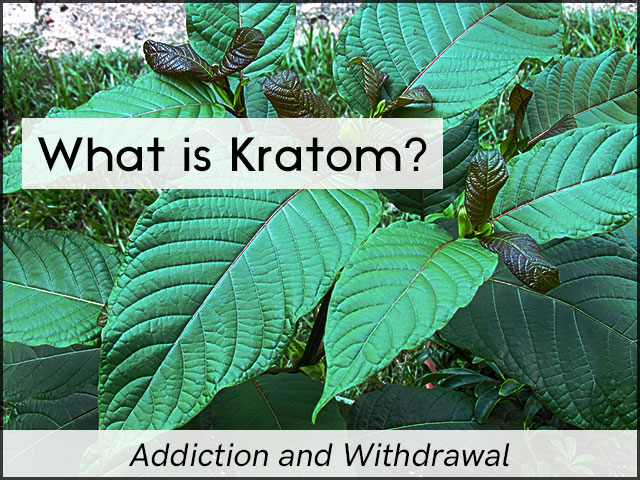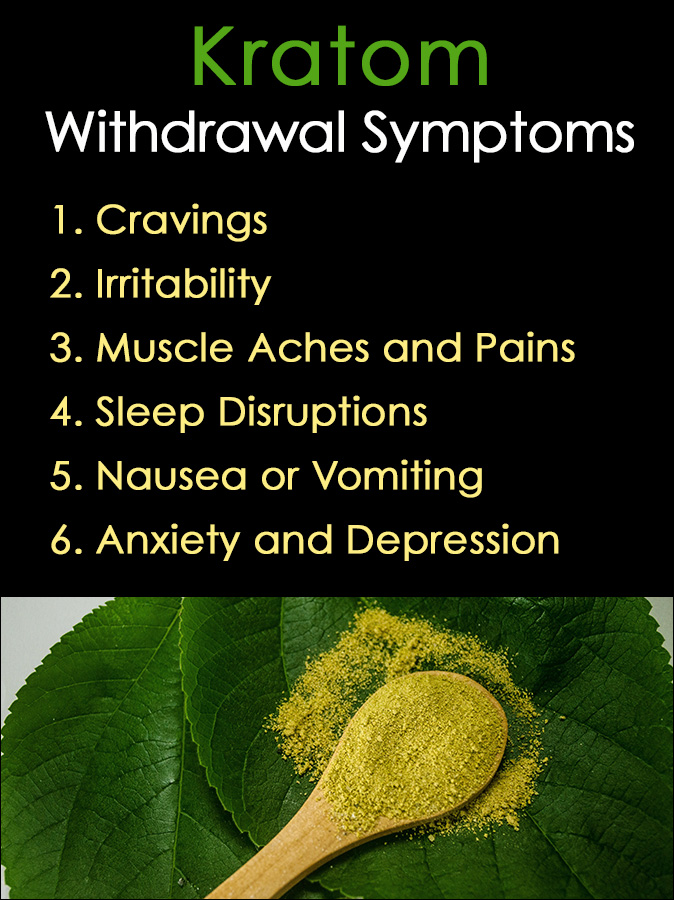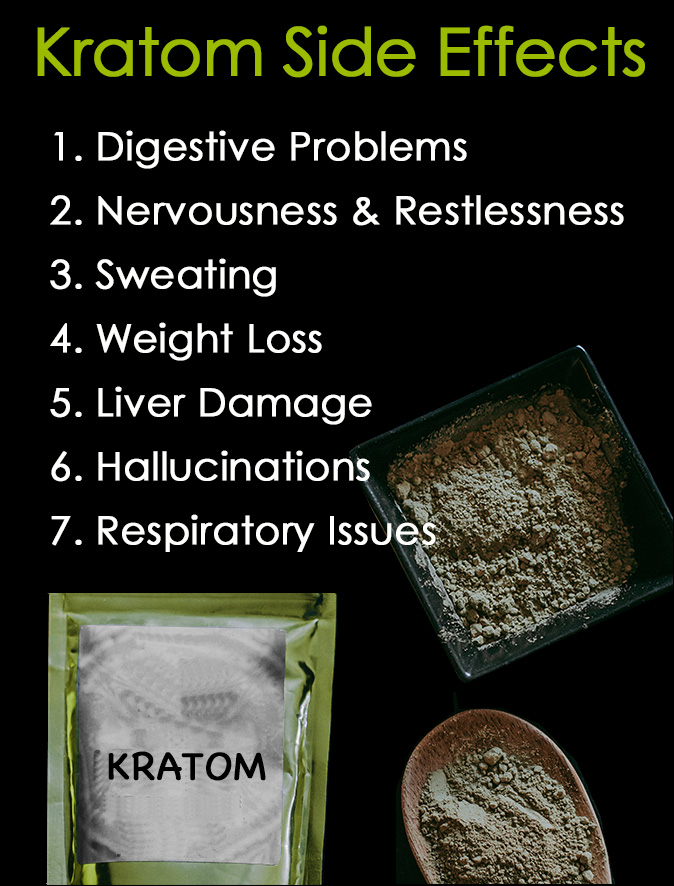
Kratom is a psychotropic herbal extract from the leaves of a tropical tree in Southeast Asia. Kratom withdrawal, addiction, and side effects have been a controversial topic for years, and it has recently gained new media attention.
Marketed as an herbal supplement, the first kratom wrongful death lawsuit awarded a multi-million dollar verdict in Washington state in July 2023.
Although it is legal at the federal level and many people consider kratom safe to use as a supplement, it is regulated in many states. Some states have banned it for use, either in the entire state or in select cities.
According to the SAMHSA National Survey on Drug Use and Health, approximately 1.7 million people over the age of 12 used kratom in 2021.
Like any substance, it’s important to be aware of any potential kratom side effects, including withdrawal and addiction.
Data from the Centers for Disease Control and Prevention (CDC) shows that kratom use was involved in 91 overdose deaths from July 2016 to December 2017.
What is Kratom?
Kratom is derived from the leaves of the Mitragyna speciosa tree in Southeast Asia.
The leaves have traditionally been used in countries like Thailand and Indonesia for producing stimulant and opioid-like effects, as well as pain-relieving and mood-enhancing qualities.
It can be ingested orally in powder or pill form, by chewing the leaves, brewing tea from the leaves, smoking the leaves, or eating the leaves with food.
Kratom contains psychoactive alkaloids and other active compounds like mitragynine and 7-hydroxymitragynine.
These compounds in kratom interact with opioid receptors in the brain, producing effects such as pain relief, enhanced mood, and increased energy.
For this reason, some people consider it a substitute for traditional opioids, and also as a way to overcome opioid addiction.
Currently, little scientific data exists on the drug’s therapeutic capacities or relative safety, since little research has been done regarding the long and short-term effects.
The Food and Drug Administration (FDA) has said there is no evidence kratom is safe or effective in the treatment of any condition.
In addition, the FDA has not approved any prescription or OTC drugs that contain kratom or the chemical substances mitragynine and 7-OH-mitragynine.

Is Kratom Addictive?
One of the biggest concerns about this herbal supplement is the potential for kratom addiction.
Even though it is not classified as a controlled substance in many areas, long-term continued use may lead to dependence or kratom addiction because some users experience withdrawal symptoms when they discontinue using it.
Chronic kratom use has been linked to liver damage, though the direct link between its use and liver damage remains unknown. Much of the drug’s pharmacology is under-researched, and is not yet thoroughly understood.
Possible Signs or Causes of Kratom Addiction
1. Opioid Receptor Stimulation
The active compounds in kratom are known to bind to opioid receptors in the brain, which increase dopamine and produce euphoria.
Stimulating opioid receptors, like with other drugs, can contribute to the addictive nature of kratom. Frequent and repeated use may lead to a physical and psychological dependence or addiction to the supplement.
2. Kratom Tolerance
Low doses of kratom or infrequent use may not be a cause for concern.
Regular use and high doses of Kratom can become a problem that leads to a tolerance, requiring even higher doses to feel the same effects as when a person started using it.
If an individual experiences a tolerance to kratom and uses it in higher doses and for longer periods of time, it increases the risk of addiction.
3. Withdrawal Symptoms
If a kratom user stops using it for a period of time and experiences withdrawal symptoms after quitting, it could indicate he or she has developed an addiction to the substance.
Like with other addictive opioids, withdrawal symptoms can range from mild to severe and include cravings, irritability, muscle aches, nausea, and sleep issues.
4. Psychological Dependence
In addition to being physically dependent, a psychological dependence may also be a sign of Kratom addiction.
When used as a coping mechanism to relieve stress, anxiety, or other mental health issues, regular use can cause a psychological dependence or addiction.

Kratom Withdrawal Symptoms
Kratom withdrawal symptoms can vary in severity for each person, depending on the length of use, the amount used, and other individual factors.
Withdrawal from any drug usually appears after prolonged use when a person develops a tolerance to a substance and stops taking it.
Many of the symptoms are similar to opioid withdrawal, which makes sense because it stimulates opioid receptors in the brain.
Common Kratom Withdrawal Symptoms
1. Cravings
Cravings for kratom and other drugs are a common sign of withdrawal. They can be difficult to overcome and are one of the biggest reasons people in recovery relapse.
2. Irritability
Increased irritability and mood swings typically occur during withdrawal because taking the substance increases neurotransmitters related to mood.
When a person quits taking kratom, they lose the boost that previously produced the feel-good chemicals in the brain.
3. Muscle Aches and Pains
Physical discomfort, like muscle aches and pain, is common for people who stop taking kratom and other opioids. Even though kratom is not an opioid, it works in a similar way to provide pain relief.
4. Sleep Disruptions
Kratom withdrawal symptoms can cause sleep disturbances that make it difficult to fall asleep or stay asleep throughout the night.
5. Nausea or Vomiting
When the body adjusts to a lack of kratom or other addictive substances, it can lead to gastrointestinal issues that cause nausea and vomiting, similar to having the flu.
6. Anxiety and Depression
Stress, anxiety, and depression are typical symptoms during withdrawal, especially for those who use substances to cope with these types of mental health issues. People often relapse to avoid having these issues resurface from quitting.
Kratom Side Effects
Due to its combination of opioid and stimulant effects, Kratom is often used as a pain reliever, mood enhancer, and for the treatment of opioid and alcohol addiction.
While many people tout its benefits, it’s important to understand the possible kratom side effects, especially with high doses or prolonged use.

Possible Kratom Side Effects
1. Digestive Problems
Kratom use can lead to digestive problems, such as constipation, nausea, stomach discomfort, and vomiting.
2. Nervousness and Restlessness
High doses and long-term use of Kratom can cause some people to feel restless, irritable, and nervous.
3. Sweating
Much like with opioids, excessive or profuse sweating is a common kratom side effect, especially when taking it in high doses.
4. Weight Loss
Prolonged use of Kratom can lead to weight loss for some people that is caused by a decrease in appetite from the supplement.
5. Liver Damage
Chronic kratom use has been linked to liver damage, though the direct link between its use and liver injury remains unknown. Much of the drug’s pharmacology is under-researched, and thus not yet thoroughly understood.
6. Hallucinations
When taken at very high doses, Kratom may induce hallucinations, delusional thinking, and even psychosis as an extreme side effect.
7. Respiratory Issues
High doses of Kratom can cause respiratory depression, similar to opioids. Though not as severe as heroin or fentanyl, slow and shallow breathing is a serious condition that can be even more dangerous when mixed with alcohol and other depressant drugs.
Kratom Anhedonia
It’s difficult to say if Kratom helps with anhedonia symptoms or causes them. Some users have reported experiencing kratom anhedonia while others have said it provided relief. The strain and dosage may play a role in how a person is affected by the condition.
Anyone who uses kratom should avoid taking it with other substances like alcohol and opioids to minimize the side effects and adverse health conditions.
Kratom Addiction Treatment
The potential for kratom addiction and withdrawal symptoms should not be underestimated just because it is legal in many places.
Kratom use in the United States is not as widespread as that of opioids or other addictive substances, but it can still be a problem for people who use it regularly and in high doses.
Kratom is sometimes called an “opioid receptor agonist” because it binds to opioid receptors and produces similar effects.
The addictive nature of it follows patterns similar to opioids, and as such, treatment usually follows the same path, beginning with supervised drug detox to manage and reduce kratom withdrawal symptoms.
After the detox process has been completed, inpatient recovery continues with a 30 to 90-day program.
An opioid addiction treatment program will offer the same benefits and resources that are effective for treating kratom addiction.
This type of treatment is individualized for each person based on their personal needs and behavioral patterns, while identifying the underlying causes of their substance misuse.
Kratom addiction treatment usually involves one on one and group sessions that include Cognitive Behavioral Therapy, Motivational Enhancement Therapy, and Relapse Prevention Therapy.
For anyone concerned about the possibility of kratom addiction side effects and withdrawal symptoms, it is recommended to seek medical attention before it leads to serious health complications.
Related Posts
- Oxycodone Side Effects and Dependence or Addiction
What is Oxycodone? Oxycodone is an opioid drug, commonly known under the brand names Oxycontin…
- Whippets Drug Side Effects, Dangers and Addiction
The Whippets Drug is one of the most common inhalants used recreationally by teens and…
- Long Term Side Effects of Drugs and Addiction
There's a lengthy list of long-term side effects of drugs and addiction that affect both…
